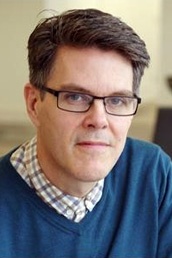If you study the art of film making, it will tell you that a good film script is based around one great question. This question captures your attention from the beginning; the story that naturally emerges slowly reveals the answer. The 'question' drives the entire story.
Question: What if every day was the same? Movie: Groundhog DayQuestion: What if a nun was made to be a nanny? Movie: The Sound of Music
Question: What if a really smart, innocent person went to prison? Movie: Shawshank RedemptionQuestion: What if dreams and reality were inter-changeable? Movie: The Matrix
Question: What if there's more to life than being ridiculously good looking? Movie: Zoolander
Films construct heroes through which the story is told, and these stories need to adhere to a strict story structure. There are about seven of these basic story structures, established from a time well before the dawn of film making. In fact, the basic structure of storytelling has hardly changed much for thousands of years.
Building a Survey Around a Great Question
I believe a good survey can be built around one great question in the same way a great film is produced. The key to designing a great survey is adhering to a strict narrative structure: where you place the respondent in the role of the hero; and the questions in the survey help the respondent to slowly reveal the answers to this central question by telling their own story.
Below are two examples of simple questions that market researchers could build a survey around:
- “What is the secret of a really good shampoo?” You immediately know the purpose of the survey and can imagine taking participants on a journey through a series of questions that mine their viewpoint on this topic. You can tie all the questions into this one topic.
- “In a lifetime of hair washing, what have you learned?” This question has an in-built story structure, you might ask people from the outset to think about all the different types of shampoo they have experienced using in the past and what they thought of them, and what brands they have built some affinity with. You could then get them to think about their experiences of good and bad hair days as a result of using certain types of shampoo, etc.
It’s interesting how once a good central question is established; the rest of the questions you ask can flow out of this easily and fluidly.
Narrative Structure: The Key to Good Surveys
Like film making it’s important your story (survey) adheres to a strict structure. Many surveys are compiled with a structure; respondents are being asked a whole load of questions in no particular order. In the same way as you might walk out of a film if it was just made up of a series of unrelated series of visuals and dialog, if they don’t understand where the survey is going, people get frustrated and are more likely to drop out or not pay attention to the question.
A survey is a journey and the respondents need to know where they are going, otherwise they could be like kids in the back of the car asking ‘are we nearly there yet’ every five minutes.
Ready-made narratives
If you are struggling to think up your own survey narrative, there are a number of ready-made well established ones you can replicate.
- The Trial Narrative: The trial narrative is one we have repeatedly used very successfully. Putting a product or service on trial has an in-built narrative structure. You have first the case for the prosecution; what is wrong with a product or service, what are you frustrated by. Then you have the case for the defence; what has the product or service done well. Then you have the jury process where respondents evaluate the pros and cons of a product’s strengths and weaknesses. Finally, respondents are asked to give their final rating – their verdict. We have positively adapted this idea in a number of ways, across a range of different consumer surveys.

- The Build a New Future Narrative: Start out by asking “What are the strengths and weaknesses of current products/service/situation?” and moving onto “What do you want in a perfect world?” You can then explore living in the real world with practical constraints and ask them to explore trade off solutions. Once drawn into this process you can then challenge participants to design their own version of these products or services with or without any practical constraints and then ask them to cross evaluate each other’s ideas.

- The Journey Narrative: People can very simply grasp the idea of a journey. You can use this idea to help guide people though a whole range of survey processes. You basically tell people at the beginning of the survey where they are starting from and where they will end up.

Making the Respondent the Hero of Their Own Story
This can be a tremendously powerful conceptual construct to really draw out more thoughtful feedback from respondents. Panellists need to feel that what they are doing is important, has meaning and that you care about what they have to say. Allow them to tell their story by asking questions that place them in control.




